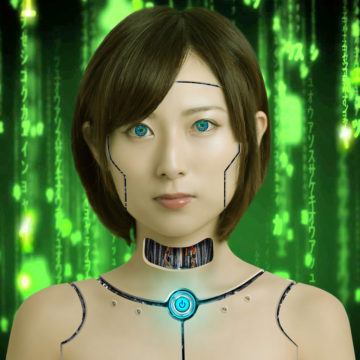by Claire Chambers
 It’s still such a strange time as regards the Covid-19 pandemic. Most governments have lifted restrictions and lockdowns. However, new variants are still emerging and far too few people have been vaccinated globally to lend confidence for the health crisis’s resolution. With this in mind, I’ve been reading Nobel laureate Kazuo Ishiguro’s Klara and the Sun. Despite dealing only obliquely with the pandemic, Ishiguro’s novel reflects a great deal about this period of our history.
It’s still such a strange time as regards the Covid-19 pandemic. Most governments have lifted restrictions and lockdowns. However, new variants are still emerging and far too few people have been vaccinated globally to lend confidence for the health crisis’s resolution. With this in mind, I’ve been reading Nobel laureate Kazuo Ishiguro’s Klara and the Sun. Despite dealing only obliquely with the pandemic, Ishiguro’s novel reflects a great deal about this period of our history.
Klara and the Sun is a fable, and Ishiguro has acknowledged in an interview:
It came out of thinking about books for children … a bedtime story … Except my daughter told me I must go nowhere near young children with this story and traumatize them. So I thought, okay, it’s going to have to be a dystopian adult dark story.
Through a deceptively simple, childlike lens, Ishiguro explores a dystopia involving artificial intelligence and gene editing, but also suggests hope for the future.
Consciously or unconsciously, he also plays on Covid-19 and how technology is changing us in relation to shifts in social, educational and employment norms. The novel reflects on disease, death and bereavement, as well as the upsurge in governmental control which has sometimes been bleak and Orwellian. The British-Japanese author focuses on loneliness, the ‘oblongs’ of the digital screens we’re fixated on, as well as those partitions and fences put up to divide us. As fellow Nobel Prize-winner Rabindranath Tagore put it more than a century ago, ‘the world has … been broken up into fragments | By narrow domestic walls’.
The Covid quarantines have prompted much concern about adolescent isolation and associated mental health problems. In his fictional meditation, Ishiguro imagines that virtual tutors give children an inadequate schooling on their ‘oblong’ devices from their individual houses. In their leisure time, isolated kids are kept company by ‘machine birds’ (drones) and, above all, Artificial Friends (AFs).
The story is told by a remarkable first-person yet nonhuman narrator: a robot girl or AF named Klara. Early on in the novel Klara lives in a shop with other AFs hoping that a sympathetic teenager will come and buy her. Eventually she goes to live with just such a girl, Josie, who is sick. It transpires that Josie’s mother Chrissie has bought Klara to try to save herself from heartbreak if the worst happens. Josie may well die young from the mysterious illness afflicting her, which it is inferred comes as a side effect of gene editing.
In some of his interviews promoting the novel, Ishiguro references CRISPR-Cas9 technology. CRISPR is a gene editing tool that opens up great medical advantages, among other things mitigating many of the illnesses that kill us and from which we live in fear. Accordingly, in the pandemic year of 2020 the Nobel Prize for Chemistry went for the first time to two women, Jennifer Doudna and Emmanuelle Charpentier, the pioneers of CRISPR. If their research progresses according to plan, humans will gain defences against and treatments for devastating diseases. Despite the groundbreaking nature of this work, it simultaneously poses dangerous questions. Once you start altering people to become resistant to cancer or coronavirus, you can also make them physically and intellectually superior. Through the novel Ishiguro explores whether ‘the human heart’ is ‘special and individual’. Alternatively, in the face of mortality it asks whether an artificial intelligence could impersonate a human being fully to the point of replacing them.
In the novel’s unnamed setting, which may be a futuristic United States, even healthy young people don’t get to work and play alongside each other until their college years. As such, from time to time teenagers need staged ‘interaction meetings’ with each other. Yet one such a meeting, dramatized in the novel, is a site for bullying. It culminates in Klara having to be rescued from being swung violently through the air. Klara has been programmed to befriend teenagers and prevent them from becoming lonely, so she is quiescent and does not resent her rough treatment. In this she is unlike her rescuer, a boy named Rick, who is angry with the boy who manhandled her. Rick also worries that Josie, his close friend, will be influenced by peer pressure to become cruel like the others.
Meanwhile such artificial environments as the AF store and the homeschool are widespread because of the manmade degradation of the natural world. Connected to this are shadowy diseases and unexplained deaths or at least disappearances. In a way this is a novel all about the climate emergency and the fallout from zoonosis in a spillover event where a virus jumps the species barrier, as in the current pandemic.
 Klara is solar-panelled, so she interprets ‘the Sun’ and the ‘special nourishment’ he pours down on her in almost religious terms, assuming his rays to be universally beneficent. Yet from Klara’s limited vantage point these rays start to be blocked out by a piece of portable equipment she calls the ‘Cootings machine’ because of a name written on its side. This machine belches out ‘Pollution’, apparently solely responsible for wreathing her world in smoke, dust and malodour. As human beings’ environment changes like this, it brings unhappiness and ill health, also affecting interpersonal relationships and creating a chasm between people.
Klara is solar-panelled, so she interprets ‘the Sun’ and the ‘special nourishment’ he pours down on her in almost religious terms, assuming his rays to be universally beneficent. Yet from Klara’s limited vantage point these rays start to be blocked out by a piece of portable equipment she calls the ‘Cootings machine’ because of a name written on its side. This machine belches out ‘Pollution’, apparently solely responsible for wreathing her world in smoke, dust and malodour. As human beings’ environment changes like this, it brings unhappiness and ill health, also affecting interpersonal relationships and creating a chasm between people.
Klara is like a child in many ways, including that she hates injustice and suffering, so she begins to mount a crusade against Pollution. This suggests that she might be read as a figuration of campaigner Greta Thunberg. The AF exhibits flat affect, and has difficulty understanding emotions. Examples of her naivety and yet freshness of perspective include the way in which she notes race blandly, without preconceptions, as when she describes a ‘black-skinned woman’. Klara is a tabula rasa who does not understand the world but is learning fast.
In the novel, Ishiguro returns to the theme of artificial life first explored in his cloning novel Never Let Me Go (2005), making the new novel something of a companion piece to this earlier and more pessimistic work. We look through Klara’s eyes as she tries to make sense of the oblongs, boxes, rectangles, partitions, and walls which she sees almost as cubist abstractions through her pixellated vision. Ishiguro has compared this splitscreen observation of different emotional possibilities to the interface of video-conference platform Zoom.
People are also busily occupied constructing their own barriers. Halfway through the novel, Rick’s mother Helen, who is originally from Britain, says:
You can tear down a fence in a moment … Then put up another somewhere else. Change the entire configuration of the land in a day or two. A land of fences is so temporary. You can change things as easily as a stage set. … Fences, what are they? Stage design. That’s the nice thing about England. Hedges give a sense of history properly set down in the land.
Helen’s nostalgia for Albion’s historic hedgerows notwithstanding, this is a novel deeply affected by the fences disgorged from 2016 onwards by Britain’s decision to exit the EU and the election of Trump in America. Most characters appear to be white and there is little explicit discussion of race or the global new right in this novel. Yet under the surface, anxieties about a return to some sort of fascism occasionally bubble up. A moody housekeeper from Eastern Europe named Melania treats Klara with hostility, with a nod and a wink to the Trump White House. Alternative communities seem to offer a way to opt out of the society’s artifice and ill health, but these are also whites-only spaces that shade into fascism.
Boundaries and hierarchies also exist both within and between AFs and their teenagers. Some children are ‘lifted’, whereby their genes are edited when they are small children to improve on what nature has given them. Meanwhile, others, such as Rick and Josie’s absent sister Sal do not have this privilege. Good schools are only open to the lifted and affluent. Atlas Brookings college is the lone reputable institution that reserves a vanishingly small quota of places for the unlifted masses based on a flawed idea of meritocracy. In the realm of robotics, too, an AF’s bright future depends on luck and happenstance. AFs are disposable and easily replaced by new models, as with potential life partners ghosting each other on dating apps. B3s are considered superior in cognition to Klara, a B2. However, later on it is discovered that the fashionable new android’s powers of empathy are not as good as the earlier model’s.
nature has given them. Meanwhile, others, such as Rick and Josie’s absent sister Sal do not have this privilege. Good schools are only open to the lifted and affluent. Atlas Brookings college is the lone reputable institution that reserves a vanishingly small quota of places for the unlifted masses based on a flawed idea of meritocracy. In the realm of robotics, too, an AF’s bright future depends on luck and happenstance. AFs are disposable and easily replaced by new models, as with potential life partners ghosting each other on dating apps. B3s are considered superior in cognition to Klara, a B2. However, later on it is discovered that the fashionable new android’s powers of empathy are not as good as the earlier model’s.
Just as the cyborg Klara blurs the boundaries between human and nonhuman, so too Ishiguro transcends boundaries between genres. The novelist takes what he needs from children’s literature, and adults’ science, speculative and dystopian fiction, creating a composite borderless form. In relation to the novel’s content, hope, especially of a child’s future, is never far from its flip side of despair. Near the novel’s end, a friend of Rick’s mother says of the teenager: ‘I hope he’s able to find a path through this mess we’ve bequeathed to his generation’. Hope lies in the young, Ishiguro suggests, but the mess this generation has been bequeathed to face in the postcoronial, climate emergency world is far from an optimistic prospect.
